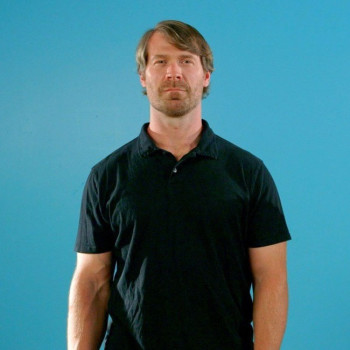Why I Don’t Stretch And You Can Too
Oct 01, 2014

I know, it sounds like a segment from “The Colbert Report,” but bear with me.
I hated stretching in P.E. Probably because the symbol of flexibility was the dreaded hurdler / hamstring stretch. And no matter how much I worked on it, it just never got any better.
Never.
Not when I was 10 in middle school gym class. Not when I was 16 and one of the captains of the high school wrestling team. Not when I was in my late 20’s and early 30’s and knew all the fancy tissue quality work, active and dynamic stretching techniques, and muscle activation drills, or when I was doing my daily joint mobility drills.
Nope. Nothing. Never.
Well not until recently.
Not until 2010, a couple years shy of 40.
Before I tell you what I did (see if you can guess) let’s examine WHY your body, or in my case, my body, my hamstrings, might be tight. (Incidentally, I’ve seen this with many of my private clients, so it’s not just a case study of one.
What if your body tightened your muscles to protect you?
Hmmmm.
What if your body, in its intuitive wisdom sensed that it wouldn’t be able to control itself if it allowed you to consciously move into certain positions or ranges of motion? What if it perceived that it - you - would or could possibly get injured by doing so?
What if your body was actually creating a series of natural “splints” when it tightens up muscles? Especially muscles that seem to remain tight no matter what you do to them - rub them, roll them, stretch them?
And what if by removing those splints, you are inadvertently opening a window of danger?
Not to sound overly-dramatic, but as someone who has injured plenty of joints, after proper and thorough warm-ups, I have to ask the question.
Hold that thought: Splints - and the removal thereof.
So how did I recently regain the ability to put my nose on my kneecap and loosen up my chronically tight hamstrings?
I started using the resets - Original Strength - back in April of 2010.
I regained my reflexive stability - my body’s subconscious and automatic ability to anticipate movement and use the correct joints and muscles at the correct speeds involved in those movements - without me having to think about it.
Maybe it’s not your hamstrings. Maybe you’re constantly having to stretch your hip flexors or your lats or your shoulders. Irregardless, it’s not the tight muscles that are the problem. They are just symptoms that “something’s rotten in Denmark,” to quote the Bard. Nature abhors a vacuum. Remove your body’s splints at your own risk. Doing so may not result in an immediate injury - a pull, strain, or something more catastrophic like an ligament injury, but your body will figure out a way to replace that splint, both in the short and long terms.
So I don’t stretch anymore. Ever. No desire, and no need. I no longer have any splints. I have all the normal and even some athletic ranges of motion I ever need to accomplish all that I currently want.
Does that mean you shouldn’t stretch?
Yes and no.
You shouldn’t stretch if you’re trying to loosen a tight muscle. You’re addressing a symptom. You need to address the root cause: A loss of reflexive stability. Regain that, and your “tight” muscles will be a thing of the past.
However, if you need to hit extreme ranges of motion, such as in various martial arts and gymnastics, then we’re discussing performance flexibility, and so you need to stretch for your sport. You still need to make sure your reflexive stability is intact.
Finally, you should stretch if it just feels good to you. Stored tension - you know, tightness, can increase stress levels. So if you want to stretch because doing so helps you relieve that stress, knock yourself out. Once you come to, just take a few (or more) deep diaphragmatic breaths, then roll around on the floor a little bit. It’s like a massage. Afterward, you, like me, may find you no longer have a need to stretch even for stress relief.
Comments (0)
Please login to comment.